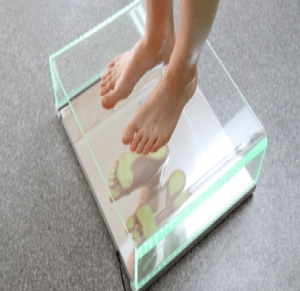What is flatfoot?
When the entire sole of the foot is in contact (or close too) with the ground while standing, it’s considered a flat foot. The result is little to no arch to the foot. Flatfoot is a common disorder, and there are types and stages that vary in degree of symptoms and disability. Flatfeet are also referred to as pes planus, posterior tibial tendon dysfunction, and fallen arches.
What are the different types of flatfoot?
There are two general types of flatfoot: flexible and rigid flatfoot. In flexible flatfoot, the foot has a normal arch at rest, but it disappears once it comes in contact with the ground. If there is no arch, whether sitting or standing, they have a “rigid” or “true” flatfoot.
Flexible flatfoot is sometimes called “pediatric flatfoot” because it is first apparent in childhood. Congenital or rigid “true flatfoot” is much less common in children.
When a rigid flatfoot develops in adults, it’s called “posterior tibial tendon dysfunction.” This type of flatfoot develops because of the weakening of the tibialis posterior muscle tendon, which is a major supporting structure of the foot arch. It is a condition that leads to flattening of the arch and rolling in of the ankle. It is progressive with early symptoms of pain and swelling at the inside arch of the foot and ankle, which may eventually lead to arthritis of the foot and ankle joints.
Flexible flatfoot is usually in both feet whereas posterior tibial tendon dysfunction or adult acquired flatfoot can occur in one or both feet.
Flatfoot Symptoms & Signs
When symptoms occur, these can include;
- Leg cramps,
- Muscle pain (aching or fatigue) in the foot or leg,
- Pain in the arch, ankle, heel or outside of the foot, and
- Pain when walking.
What are other causes of flatfoot?
A person may be born with a flatfoot, or develop it as an adult. Less common causes of flatfoot include:
- Tarsal coalitions: A condition where foot joints bridge or grow together restricting or prohibiting movement of that joint.
- Accessory navicular bone: a small extra bone in the posterior tibial tendon that causes a weakening of tendinous support to the arch
- Ligament laxity in congenital diseases
- Charcot arthropathy
- Trauma
- Obesity
- Diabetes
- Neuropathy
- Age
- Pregnancy, due to hormonal changes such as increases in elastin
- Osteoporosis
- Overuse
What are flatfoot symptoms and signs?
A flatfoot may cause no symptoms. Symptoms of flatfoot include pain that may be in the inside arch, heel, or ankle and on the outside of the foot just below the ankle. Patients often complain of generalized foot fatigue as a first signs of flatfoot. Some patients may complain about their inability to keep up with their peers during physical activity. Flatfoot can also cause shin pain (shin splints) and aching of the knee, hip, and/or lower back.
How do health care professionals diagnose flatfoot?
One may look at their feet to see if they have an arch when standing barefoot for a general assessment. A foot specialist will provide an in-depth evaluation usually including X-rays to determine the precise type of flatfoot, its cause, and potential treatments. A doctor may perform a thorough study of walking pattern, called gait analysis, to determine the severity of flatfoot.
What is the treatment for flatfoot?
Treatment depends on the type of flatfoot, its stage of progression, and the symptoms. Early treatment is advised whether one’s condition is a flexible, rigid, or adult acquired flatfoot. Treatments include proper shoe gear, over-the-counter inserts, custom functional orthotics, bracing, casting/immobilization, physical therapy, NSAIDs, weight loss, changes in activities, and surgery.
What is the prognosis of flatfoot?
Prognosis depends on the type and severity of the flatfoot. Many people with pediatric or flexible flatfoot function without any signs or symptoms and are unrestricted in their levels of activity. These people do perfectly well without any treatments. If there are symptoms, however, they are often successfully managed with conservative care. Adult acquired flatfoot or true rigid flatfoot tends to be progressive, leading to functional disability and progression of symptoms that interfere with normal daily activities. Therefore, proper diagnosis and early treatment is vital to having a good prognosis.
About Dr. Bagwe
Dr. Bagwe is a leading orthopedic surgeon specializing in ankle and foot reconstruction. If you are looking for an orthopedic surgeon near you then look no further. Dr. Bagwe is an industry leader when it comes to foot and ankle surgery doctors in St. Louis. Dr. Bagwe and his friendly and professional team is ready to welcome you and tell you everything you need to know.
Reach out and contact us today.






